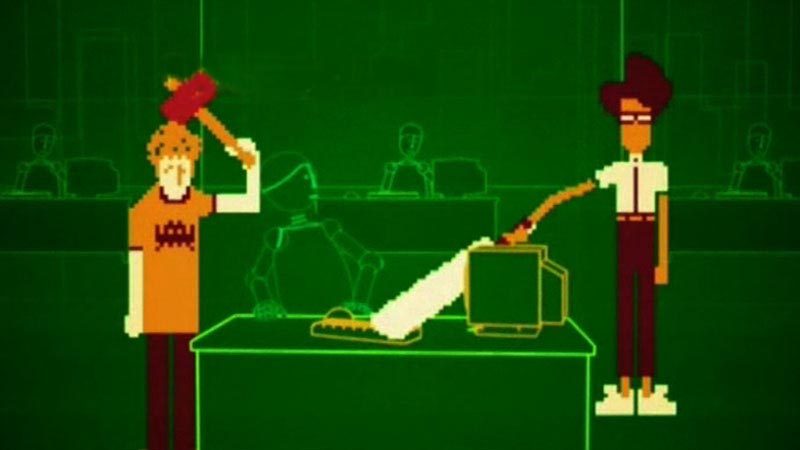Sorry couldn’t resist, I love the IT Crowd ![]()
Ok, what am I fixing and what are my procedures?
I need to remake some of my circuits from my experimentation posts and give them to one of my lovely colleagues to sabotage. I should start with something relatively simple and work up to the complex stuff so…
- Start off with a simple logic gate circuit
- Step it up to a transistor circuit
- Move on to a basic monostable circuit with an LED output
- Finish it off with the binary to decimal counter
4 circuits of increasing complexity… working my way through these and returning them to a working state will prove my competency ![]()
I have my circuits but what are my procedures?
I’ve already done some work on fault finding and analysis but I think, considering my past performance, that I need a little help. Dean has highlighted 3 methods of circuit analysis that I can try:
- Top Down – starting at the input, working through the process and finishing with the output
- Bottom Up – starting at the output, working through the process and finishing with the input
- Split – starting with the process and working outwards
Looking at these three methods I can see that they would be suited to different circuits. You might use the top down or bottom up method on a simple circuit but it would take ages to go through a large or complex circuit all the way from input to output. For this type you’d use the split method, identifying the signals going into and coming out of your process section, this narrows it down a little faster.
I’m getting a little ahead of myself here, the first thing I need to do (considering the mischievous nature of my fellow students) is to make sure I’m not going to have my eyebrows singed off first! . If I’m going to hand someone a circuit and ask them to break it there is the distinct possibility that they might put some of my components in the wrong way round, this could result in said eyebrow singing if I just powered it up straight away. Back when I first started to work with electronics I put together a fault finding document, I then added to it for use with prototyping methods. Both procedures included a visual inspection, this has to be the first thing that’s carried out. The next would be a powered inspection and finally using the tools I’ve investigated for analysis using the new methods I’ve learned above.
So my final… awesome… circuit-in-distress-saving procedure is:
Visual
- Double check your circuit matches your diagram.
- Is everything pushed in properly?
- Are all polarised components in the right way round?
- Are your stripped wire ends the right length? (5-10mm)
- Have any connections snapped?
- Are the values of your components correct? (resistors, capacitors etc.)
- Is your IC in the right way round?!?
Powered
- Is anything heating up? (Be careful!)
- Does it smell of burning?
Tooled Up
- Top down, bottom up or split depending on type and size of circuit.
- Multimeter to check continuity and voltage values.
- Ocilloscope to check signal types and changes.
Time to get building those circuits and choosing someone to break them…
